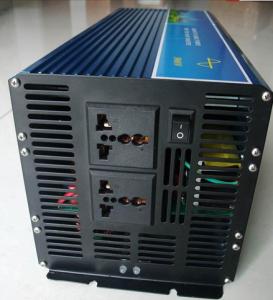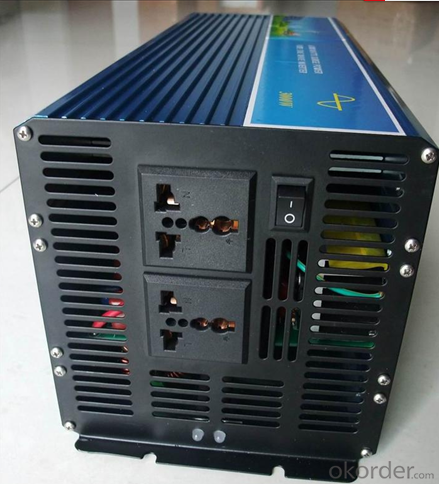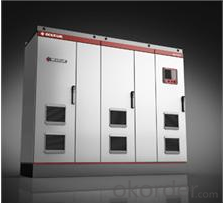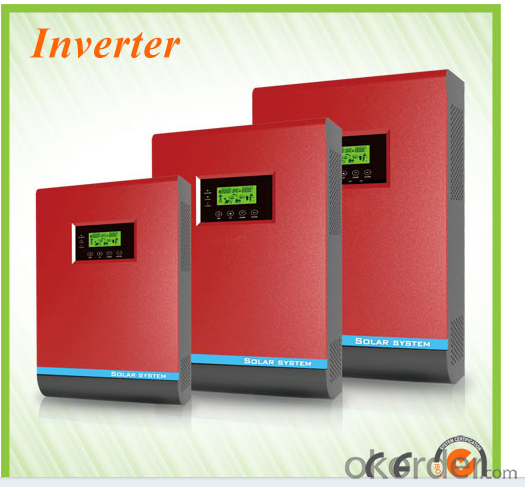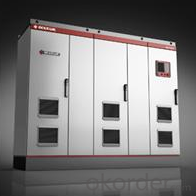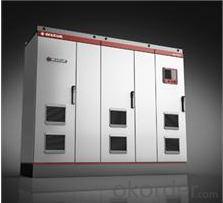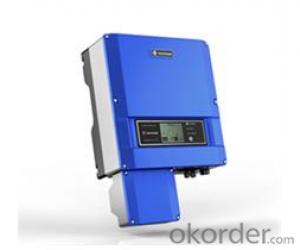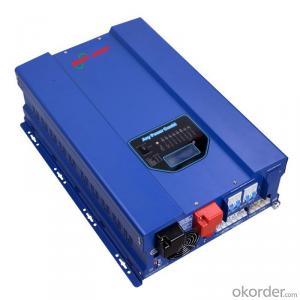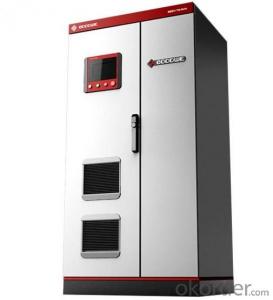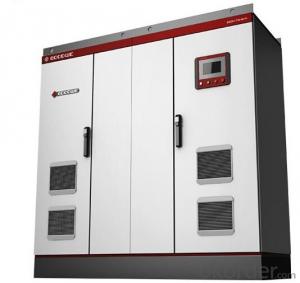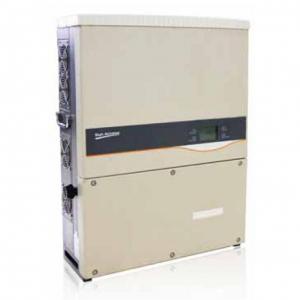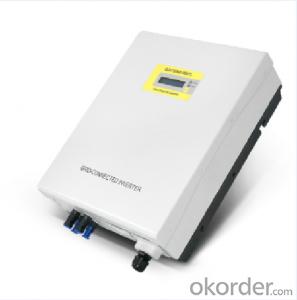Best 24V Solar Inverter GW500K-MTL On Grid Solar Inverter
- Loading Port:
- Shanghai
- Payment Terms:
- TT or LC
- Min Order Qty:
- 10 unit
- Supply Capability:
- 100 unit/month
OKorder Service Pledge
OKorder Financial Service
You Might Also Like
Description:
CNBM Solar is a world-leading and Vertical integrated manufacturer of high-performance with Silicon,
Wafer, Cells, Modules, which convert sunlight into electricity for residential, commercial, and utility-scale
power generation.
The capacity of CNBMSolar is reach to 1GW, and make sure each year our shipment capacity is more
Than 700-800MWs, at the same time, we have set up the largest solar power station with our partner
in Ukraine.
CNBM is a Quality + Service oriented company with“Excellence at Each Step” approach, composed of
the finest components from TUV and IEC-certified partners around the world, CNBM modules consistently
undergo a variety of trials at the company’s Test & Development Centre, ensuring peak performance
capabilities. The company is committed to develop and provide the world with clean and renewable energy
to ease the energy shortages as well as human kind’s impact on the environment.
Feature and data
GoodWe central GW500K-MTL solar inverter is widely used in large-scale solar power plants. As core equipment in solar power station, its stability and reliability play an important role in long-term investment returns. GW500K-MTL solar inverter adopts industrial design philosophy as well as proven inverter control technology, which ensures its 25 years life time. In terms of solar plants grid integration, GoodWe solar inverter is also equipped with output power liner control, SVG reactive power compensation technology, LVRT capability and other advanced technologies which are apt to grid integration and management. In addition, its lower THDi output and higher conversion efficiency provide stronger support to green and efficient power plants operation.
| DC Input Data | Max. PV-generator power [KW] | 550 |
| Max. DC voltage [V] | 1000 | |
Max. DC current [A] | 1200 | |
| MPPT voltage range [V] | 450~820 | |
| Max. input numbers | 10 | |
| Nighttime self-energy consumption [W] | <100< td=""> | |
| AC Output Data | Nominal output power [KW] | 500 |
| Nominal output voltage(Line Voltage) [V] | 270 | |
| Grid voltage range(Line Voltage) [V] | 310~450(Equipped with 270/400 tranformer) | |
| Rated output current [A] | 1070 | |
| Max. output current [A] | 1177 | |
| Nominal grid frequency [Hz] | 50/60 | |
| Grid frequency range [Hz] | 47.5~52.5/57~63 | |
| THDi | <1%< td=""> | |
| Efficiency | Max. efficiency | 98.8% |
| European efficiency | 98.6% | |
| MPPT adaptation efficiency | >99.5% | |
| Gerenal Data | Dimensions (WxHxD) [mm] | 2610*2165*800 |
| Net weight [kg] | 2100 | |
| Housing | Indoor | |
| Operating temperature range | -25~55℃ | |
| Relative humidity | 0 ~ 95% | |
| IP Protection class | IP20 | |
| Topology | Transformer electric isolation | |
| Cooling | Forced air-cooling | |
| Communication | RS485(Ethernet/GPRS Optional) | |
| Display | 7"LCD Touch Screen | |
| Standard Warranty [years] | 2 (Extention optional) |
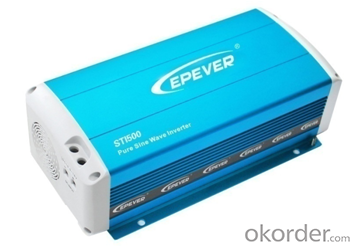
FAQ:Pls introduce more about CNBM
CNBM is a China government leading company ,one of Fortune 500
- Q: How does a solar inverter handle grid faults or disturbances?
- A solar inverter handles grid faults or disturbances by quickly detecting any changes in the grid voltage or frequency. When a fault or disturbance occurs, the inverter's protective features activate, causing it to disconnect from the grid momentarily. Once the fault or disturbance is resolved, the inverter automatically reconnects to the grid and resumes normal operation. This ensures the safety of the solar system and prevents any damage to the inverter or the grid.
- Q: Can a solar inverter be used with batteries for energy storage?
- Yes, a solar inverter can be used with batteries for energy storage. In fact, this combination is commonly used in residential and commercial solar systems to store excess solar energy generated during the day and use it later when the sun is not shining, such as at night or during power outages. The solar inverter converts the DC power from the solar panels into AC power for immediate consumption or for charging the batteries. The batteries then store the excess energy for later use, providing a reliable and continuous power supply.
- Q: Can a solar inverter be used in a solar-powered desalination system?
- Yes, a solar inverter can be used in a solar-powered desalination system. A solar inverter is responsible for converting the direct current (DC) electricity produced by solar panels into alternating current (AC) electricity, which is required to power the desalination system. By utilizing a solar inverter, the solar energy generated can be efficiently utilized to operate the desalination process, making it a sustainable and environmentally friendly solution for producing fresh water from seawater.
- Q: Can a solar inverter be used with different types of monitoring systems?
- Yes, a solar inverter can be used with different types of monitoring systems. Solar inverters are designed to convert the direct current (DC) electricity produced by solar panels into alternating current (AC) electricity that can be used in homes or businesses. While some inverters come with built-in monitoring systems, they can also be connected to external monitoring systems that provide more advanced data and analytics. This allows users to monitor and manage their solar power generation and consumption effectively, regardless of the monitoring system they choose to use.
- Q: What is the role of a grid protection relay in a solar inverter?
- The role of a grid protection relay in a solar inverter is to monitor the performance and safety of the grid connection. It helps to ensure that the solar inverter operates within the specified parameters and protects the grid from any potential issues such as overvoltage, undervoltage, or frequency deviations. The relay acts as a safeguard by quickly disconnecting the solar inverter from the grid in case of any abnormalities, preventing any damage to the inverter or the grid itself.
- Q: How does a solar inverter protect against lightning strikes?
- A solar inverter typically has built-in protective measures, such as surge protection devices and grounding systems, that help safeguard against lightning strikes. These protective measures divert the high voltage surge caused by lightning away from the inverter, ensuring its safety and preventing damage to the solar power system.
- Q: What are the different output waveforms of a solar inverter?
- The different output waveforms of a solar inverter include sine wave, modified sine wave, and square wave.
- Q: Are solar inverters weather-resistant?
- Yes, solar inverters are typically weather-resistant. They are designed to withstand various weather conditions such as rain, snow, and extreme temperatures. However, it is important to note that prolonged exposure to harsh weather conditions could potentially affect their performance and lifespan. Regular maintenance and proper installation can help ensure their durability and longevity.
- Q: Can a solar inverter be used with a smart home system?
- Yes, a solar inverter can be used with a smart home system. Smart home systems are designed to integrate with various devices and technologies, including solar inverters. By connecting a solar inverter to a smart home system, users can monitor and control their solar energy production, track energy consumption, and optimize energy usage based on real-time data. This integration allows for increased energy efficiency and convenience in managing solar power within a smart home environment.
- Q: How does the size of a solar inverter affect its performance?
- The size of a solar inverter directly impacts its performance. A larger inverter with a higher wattage capacity can handle a greater amount of solar power generated by the panels. On the other hand, a smaller inverter may not be able to efficiently convert and utilize all the energy produced, resulting in a decrease in overall system performance. Therefore, choosing the appropriate size solar inverter is crucial to ensure optimal performance and maximize energy production.
Send your message to us
Best 24V Solar Inverter GW500K-MTL On Grid Solar Inverter
- Loading Port:
- Shanghai
- Payment Terms:
- TT or LC
- Min Order Qty:
- 10 unit
- Supply Capability:
- 100 unit/month
OKorder Service Pledge
OKorder Financial Service
Similar products
Hot products
Hot Searches
Related keywords
